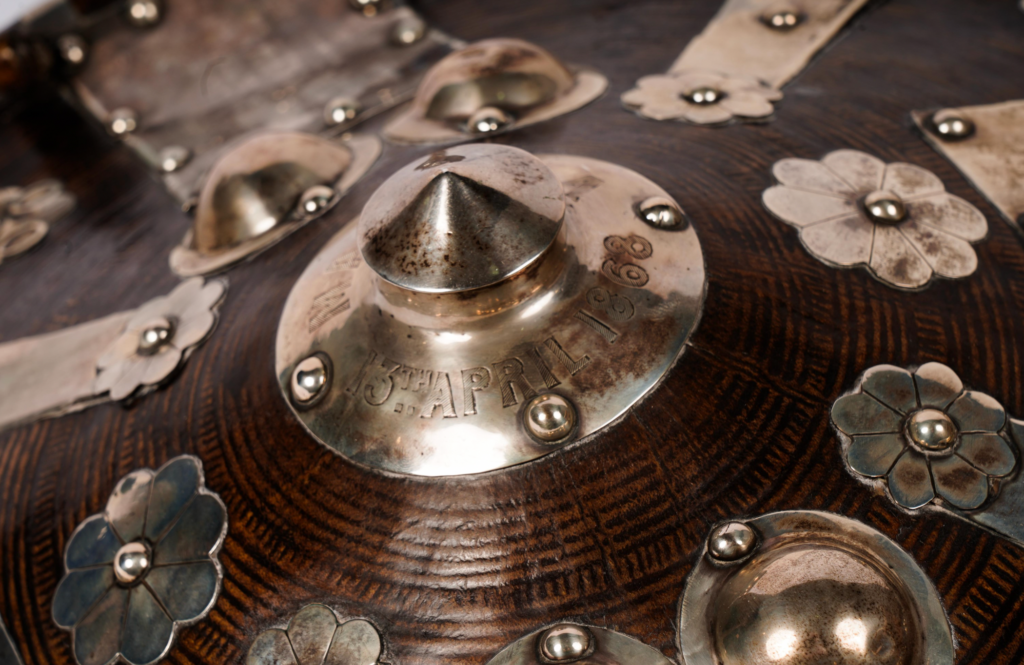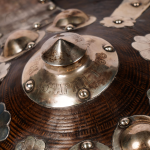
An Ethiopian shield that was looted during a battle involving British forces in 1868 was withdrawn from an auction Thursday after an Ethiopian heritage official formally requested its return from the UK.
The 19th century domed, decorated shield was Lot 903 in Anderson & Garland’s sale “The Collector’s Auction”, scheduled to take place Thursday morning at its head office in the English city of Newcastle. The metal and animal hide artifact had been inscribed with the location and date of the conflict “Magdala 13th April 1868”, (now known as Maqdala) and given a modest price estimate of £800-£1,200.
News of the sale’s cancellation was first reported by The Art Newspaper.
The shield was part of large trove of royal, religious, and military artifacts that were looted after British forces seized a compound of the Coptic Christian Emperor Tewodros II, in what was then known as Abyssinia. Sites in the northern village where Tewodros was based were looted by released British hostages and British forces, and the objects were taken back to the UK.
The withdrawal of Lot 903 took place after Abebaw Ayalew, director general of Ethiopia‘s Heritage Authority, wrote to the auction house on February 23. Ayalew’s letter said that the shield had been “wrongfully acquired”, asked for the sale to be cancelled and for it to be repatriated back to the Ethiopian government.
The Telegraph also reported that a restitution committee overseen by Ethiopia’s National Heritage agency, a branch of the country’s tourism board, had labeled the sale as “inappropriate and immoral.”
The lot description for the shield on Anderson & Garland’s website did note the historical event behind the shield’s acquisition by describing how British commander General Robert Napier (later Lord Napier of Magdala) had ordered “the destruction of Tewodros’ artillery and the burning of Madgala as retribution” as well as troops “looting many local artifacts which they took back to Britain”.
However, The Art Newspaper reported that the auction house did not provide details on the shield’s provenance after 1868.
Anderson & Garland did not respond to a request for comment from ARTnews.


